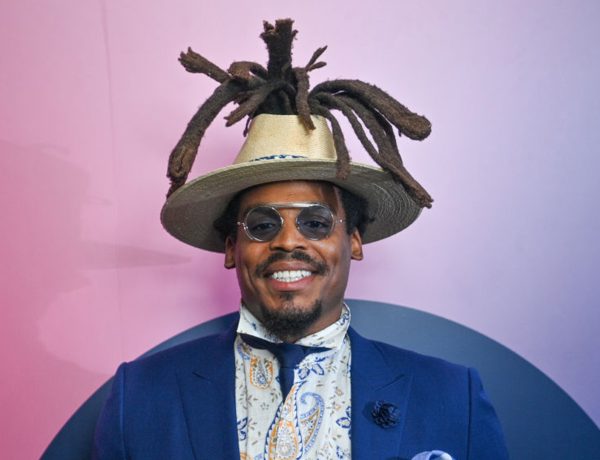Imagine being present at the most recent New York Fashion Week, watching an exclusive runway show of your favorite Fashion brand in a Virtual Fashion World. You gaze around as the show begins; to your left, Anna Wintour; to your right, Leonardo DiCaprio is having a lively chat with Kanye West. As the models stream down the runway flaunting the latest in technical fabrics and revolutionary designs, a User Interface (UI) pops up.
“Shearling Wool Jacket – $605,” the UI displays as you use your hands to point to some text at the side that reads “Add to Cart.” After checking out, you take off your Virtual Reality (VR) headset, and you’re back in your bedroom in Tokyo. Just a few days later, you receive a package containing the Shearling Jacket that was worn by the model in the VR Fashion show.
Virtual Reality is one of the most significant technological marvels in today’s revolutionary digital age, and it has certainly caught the eye of the Fashion Industry — especially during the Coronavirus pandemic.
Fashion brands and conglomerates have already taken measures to adapt to the current state of the world; they are figuring out proper ways to compensate supply chain workers; different groups have proposed changes to the Fashion Week calendar. But, VR stands to be Fashion’s chief player: it is a peek into the proverbial keyhole of what Fashion could look like soon. Enter the new virtual Fashion world. Virtual Reality is here to stay.
Technology is a broad term to use in this scenario, as the Fashion industry has already incorporated it before (runway live streams and online shopping wouldn’t be possible without the internet after all.) A more suitable term to use is Immersive Technology, which doesn’t only include Virtual Reality, but also Augmented Reality (AR) and Mixed Reality (MR) — all of which fall under the umbrella term, XR.
AR is particularly intriguing because it sounds out-of-reach, but is actually already possible to use on modern mobile devices. You may not even have known that you’ve used it before — Snapchat and Instagram Stories incorporate elements of AR when say, superimposing a pair of glasses to a selfie. Fashion brands have also experimented with AR in the same way they have with VR; Zara is one such brand that allowed store visitors to use AR on their phones to see models walking around wearing the brand’s clothes. That is what makes AR a fascinating piece of technology; it doesn’t take you away from reality — it merely builds upon and enhances it.

What separates VR from the plethora of other technologies, however? People often dream about an escape from reality — to be able to be transported elsewhere or even to experience new worlds entirely. Due to the blazing-fast computing power that we have today, VR can offer exactly that. VR makes use of computer technology to generate simulated 3D environments where users can look around, pick up things through the use of haptic feedback controllers, hear binaural audio, and in some cases, even smell and taste. Virtual Reality is the definition of immersion.
Of course, VR wouldn’t be feasible without the state-of-the-art advancements in hardware and software technology. With modern VR devices made by Oculus, HTC, and Valve on the market, it’s easy to overlook its rocky beginnings.
It turns out, VR was just in a state of slumber, preparing for its inevitable grand resurgence.
The first instance of Virtual Reality being used in history was back in 1956 when Morton Heilig — who was a Cinematographer with a background in the Hollywood Motion Picture industry — invented the Sensorama, a Head-mounted display (HMD) that allowed users to experience a simulation of a city-based environment. Heilig’s goal was to make the Sensorama’s users feel like they were part of a biker movie, à la Marlon Brando in The Wild One. Users were able to ride a motorcycle while hearing the engine, feeling the motor’s vibrations, and smelling the exhaust. As is with concepts ahead of its time, only a few people believed in the technology, and work was later halted when Heilig stopped receiving financial backing. Nonetheless, the Sensorama set off a ripple effect for Virtual Reality.
The term “Virtual Reality” wasn’t coined until the mid-1980s, when the founder of VPL Research, Jaron Lanier, first developed and sold VR products, such as the DataGlove and Eyephone HMD, to a consumer audience. An audience was certainly needed in the golden age of arcades in the ’90s when the first VR arcade game, Virtuality, was invented by Jonathan Waldern, a Ph.D. graduate from the Loughborough University of Technology. Virtuality convinced people that VR could reach consumers — both in arcades and at their homes.
In 1995, Nintendo — already then one of the most prominent figures in the world — saw an opportunity to break into an untapped home VR market by releasing the Virtual Boy console. The console was also an HMD that featured a unique red stereoscopic 3D display but was, (and still is,) considered a commercial failure. While it sold over 700,000 units worldwide, it wasn’t enough for Nintendo, which was used to legendary sales hits like the GameBoy and Nintendo Entertainment System (NES). Moreover, the console was as far from Virtual Reality as it could be; it was uncomfortable, and the lack of color graphics at the time broke its immersion.
Virtual Reality’s technological progress seemed to come to a screeching halt during this period. As far as the tech industry was concerned, it was as good as forgotten. It turns out, VR was just in a state of slumber, preparing for its inevitable grand resurgence.

Image of the Oculus Rift VR headset.
The modern era of VR was ushered in by Oculus founder and designer Palmer Luckey in 2010 when he prototyped the Oculus Rift headset, a VR device. The Rift’s first development kit — funded by a Kickstarter project raising $2 million — was released on March 29, 2013. Catching the eye of Facebook CEO Mark Zuckerberg, the company purchased Oculus the following year for a whopping $2 billion, sparking a new generation for the VR industry. The consumer version of the Oculus Rift was released in 2016, and it was a sign that VR has arrived. Other companies soon followed suit; HTC and Valve have released the Vive and Index respectively; Samsung with their mobile Gear VR headset (in partnership with Oculus.) Recently, Oculus released a follow-up version to the Oculus Rift called the Rift S, and an untethered headset called the Quest.
Indeed, consumers nowadays want an experience, to feel things. It is without question that Virtual Reality provides exactly that.
Altogether, these devices have brought upon us unrivaled immersion that is impossible for various sectors of the Fashion industry to ignore.
Through the use of VR, online shopping might look a lot like Obsess, a Virtual Reality e-commerce store by MIT Computer Science alum, Neha Singh, who strives for change in an otherwise static online-shopping age. Currently, Obsess provides different virtual retail locations that are browsable on the web like a luxury department store or arctic ski-ware cabin — perhaps soon, we can browse Dover Street Market’s Comme des Garcons and Bianca Chandon garments straight from our homes.
This type of VR technology is called WebVR as the experiences can be viewed from a web browser like Chrome or Firefox, where WebVR is already built into the platforms. Tech startup Youcan used that technology in re-creating Dolce & Gabbana’s store in VR, with plans to create virtual shopping spaces similar to Obsess, but with the ability to walk around and feel garments.
VR won’t only be able to impact the shopping experience, but also the in-person runway show, giving people around the world the chance to be present in an otherwise exclusive event. In 2014, Topshop used VR to present its London Fashion Week show at the Tate Modern. Buying that Shearling Wool Jacket straight from the runway sure sounds more realistic nowadays.
A Virtual Fashion World includes Fashion brands, e-commerce shops, and tech startups, all experimenting with VR technology is a step in the right direction, especially when they are all affected with drastic worldwide events like the current pandemic. If a blend of physical and digital through the use of VR really is the future of Fashion, it can not only help maintain businesses in times like these but also introduce a new audience to the industry. Fashion’s growth sounds more exciting than ever.
Increasing advancements in VR technology push the world into a future where having a VR headset might be the norm, espcially for the virtual fashion world . Check out the Oculus Quest: a headset with no wires while still maintaining a high-fidelity image. Or, the Valve Index, the most powerful VR device currently on the market with such a crisp image that the lines between real and virtual are blurred. Indeed, consumers nowadays want an experience, to feel things. It is without question that Virtual Reality provides exactly that.
Read more fashio articles at ClicheMag.com
Images provided by Unsplash


